

 |
Stephen Altschul National Center for Biotechnology Information, NIH, USA Dr. Altschul (PhD, M.I.T., 1987) is a Senior Investigator with Computational Biology Branch of the NCBI. The principal author of BLAST, PSI-BLAST and PHI-BLAST Dr. Altschul's contribution to bioinformatics, evolutionary biology and computational biology is almost immeasurable. Today more than 100,000 BLAST searches are performed each day on NCBI servers. Indeed, the original 1990 BLAST paper was far and away the most cited scientific paper of the last decade. Over the past decade, Dr. Altschul has played a critical role in developing robust statistical methods for assessing sequence similarity. These contributions, which were key to the development of BLAST, not only enhanced the speed with sequence searching could be performed, but also greatly improved the sensitivity of sequence searches. With the introduction of PSI-BLAST in 1997, Dr. Altschul and co-workers once again demonstrated how the smart use of statistics can make sequence searching a truly awesome scientific tool.
|
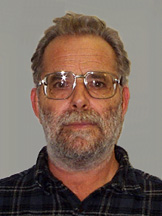 |
Michael Ashburner European Bioinformatics Institute and Cambridge University, UK Dr. Ashburner is a Professor in the Department of Genetics at Cambridge and a Senior Researcher at the EBI. The principal author of FlyBase and leader of the FlyBase consortium, one of the most comprehensive databases on a living organism (Drosophila), Dr. Ashburner has pioneered the integration of genetic, genomic and phenotypic data into biological databases. FlyBase is a superb example of how coordinated, distributed efforts in annotating model organisms can work. Using the completed Drosophila genome as a guide, Dr. Ashburner is also actively studying many other aspects of fruit fly biology including the molecular origins of speciation, the details of Drosophila chromatin organization and the correlated patterns Drosophila gene expression
|
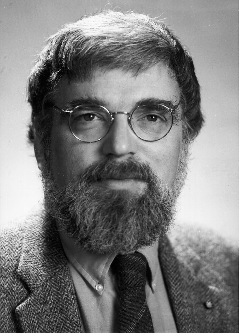 |
Ford Doolittle
Dalhousie University, Canada Dr. Doolittle (PhD, Stanford, 1969) is a Professor of Biochemistry at Dalhousie University in Halifax, Nova Scotia, where he has been since 1971. The winner of numerous awards and a fellow of the Royal Society of Canada, Dr. Doolittle is also the Director of the CIAR (Canadian Institute of Advanced Research) Program in Evolutionay Biology. Dr. Doolttle, Canada's pre-eminent evolutionary biologist, has pioneered the application of sequence comparisons to explore the origins of introns, exons, gene transfer and nuclear genomes. He has also made seminal contributions to our understanding of phylogenetic classification and the "tree of life" through his studies of archaebacterial and primitive eukaryotic genomes.
|
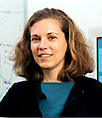 |
Terry Gaasterland
Rockefeller University, USA Dr. Gaasterland (PhD, Univ. of Maryland, 1994) is an Assistant Professor and head of Computational Genomics at the Rockefeller University where she has been since 1998. The winner of a Presidential Early Career Award in 2000, Dr. Gaasterland has already established herself as a leader in the field of genome annotation. She specializes in using semantic information (i.e. data about the data) to develop alternative or cooperative answers to queries. Using these strategies Dr. Gaasterland built MAGPIE (Multipurpose Automated Genome Project Investigation Environment) and EGRET for visualizing and annotating genomes in real-time. More recently she has undertaken projects directed at the semi-automated annotation of gene expression data, and the integration of gene expression with genome sequence analysis (TANGO and HERON).
|
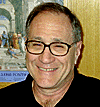 |
Barry Honig
Columbia University, USA Dr. Honig (PhD, Weizmann Institute, 1967) is a Professor of Biochemistry and Molecular Biophysics at Columbia University. Dr. Honig did his postdoctoral work with two of the pioneers of macromolecular simulation and modelling: Martin Karplus at Harvard University and Cyrus Levinthal at Columbia University. He has been a faculty member at the Hebrew University in Jerusalem and the University of Illinois at Urbana-Champagne. Dr. Honig has played a key role in developing many popular software applications for calculating and visualizing macromolecular energetics, interactions and surfaces (GRASP, DelPhi, STING). He is continuing to develop new methods in computational biology and chemistry and applying them to structure-based sequence analysis, predictions of protein structure, and calculations of the physical-chemical properties of proteins, nucleic acids, and membranes, starting from their three-dimensional structures.
|
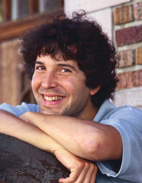 |
David Baker
University of Washington, Seattle, USA
The Overton Prize was
established by the ISCB in memory of G. Christian Overton, a major
contributor to the field of bioinformatics and member of the ISCB Board
of Directors who died unexpectedly in 2000. The prize is awarded for
outstanding accomplishment to a scientist in the early- to mid- stage of
his or her career who has already made a significant contribution to the
field of computational biology through research, education, service, or
a combination of the three.
|
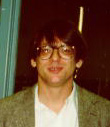 |
John Reinitz SUNY Stony Brook, USA Dr. Rernitz is an Associate Professor of Applied Math and Statistics at the State University of New York, Stony Brook NYDr. Reinitz is taking on a computational challenge in systems biology that few others would dare to consider – modeling embryo development. In particular, Dr. Reinitz performs both theoretical and experimental studies on mechanisms of segmentation gene expression during early Drosophila embryogenesis. These studies are aimed at understanding the process by which maternal gene gradients ultimately give rise to the segmental patterns in embryos and the way in which regulatory cascades of transcription factors control the process. Using experimental data on gene expression patterns from confocal microsopy as "state" variables, Dr. Reinitz has been using simulated annealing and least squares optimization to develop remarkably revealing models of Drosophila embryogenesis.
|
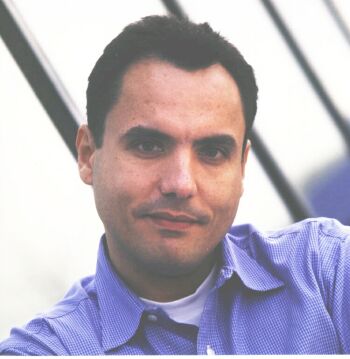 |
Isidore Rigoutsos IBM Thomas J. Watson Research Center, USA Dr. Rigoutsos (PhD, New York University, 1992) is the manager of the Bioinformatics and Pattern Discovery group at the Computational Biology Center of IBM Research. Currently he is also a Visiting Lecturer at the Department of Chemical Engineering of the Massachusetts Institute of Technology. His work primarily revolves around the use of his recently developed Teiresias algorithm (=a combinatorial algorithm for carrying out unsupervised pattern and association discovery) as a tool for tackling a number of interesting problems from computational biology that include motif discovery in biological sequences, multiple sequence alignment, the analysis of gene expression data, the functional and structural annotation of amino acid sequences, the characterization and prediction of local 3D structure directly from sequence data, the discovery of genes in prokaryotic organisms, etc. Currently, he devotes a large part of his time to the automated annotation of complete microbial genomes, the study of non-canonical elements in transmembrane helices, and the study and analysis of the human cytomegalovirus, and of the Kaposi sarcoma virus. |
Contact us Last update: June 1, 2002, maintained by Haiyan Zhang
